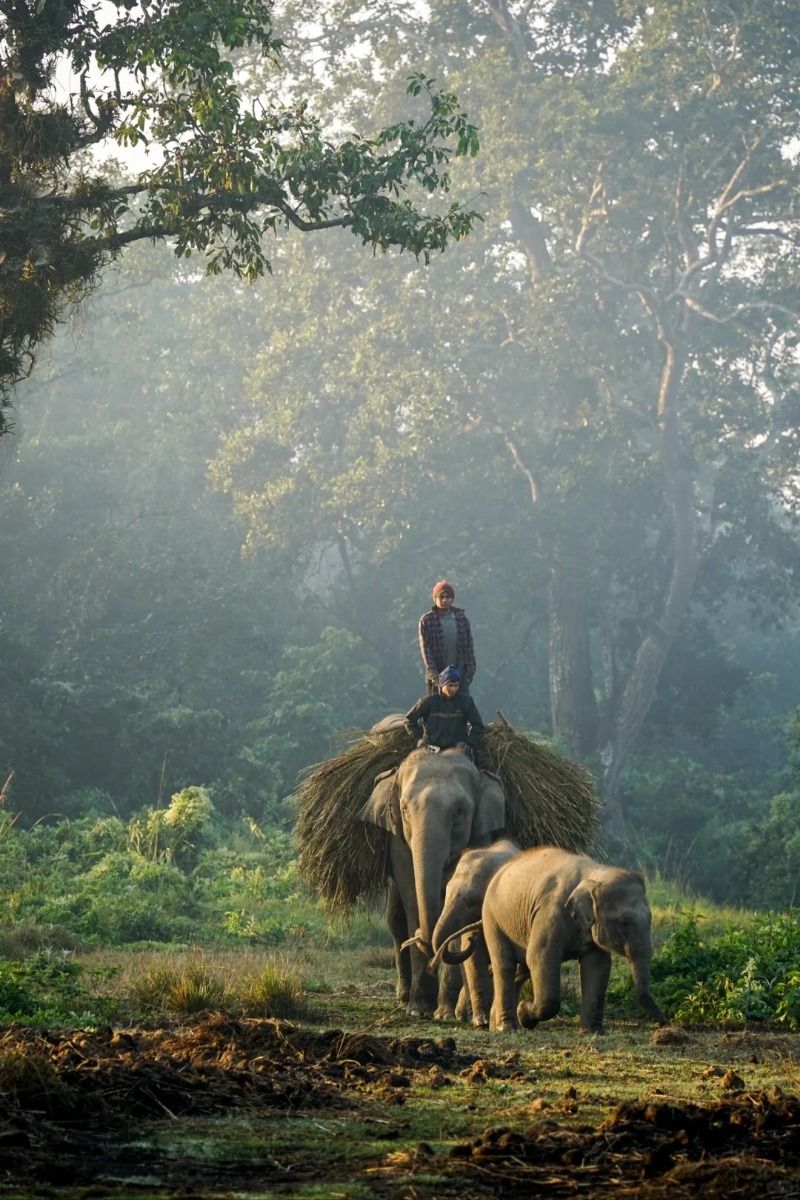Introduction
Chitwan National Park, located in south-central Nepal, is one of the first national parks in Nepal and a UNESCO World Heritage Site. Known for its lush jungles, diverse wildlife, and exciting safari experiences, Chitwan is a must-visit destination for travelers seeking cheap vacation ideas with adventure and nature.
- Introduction
- History of Chitwan National Park
- Fascinating Facts About Chitwan National Park
- Timeline of Chitwan National Park
- Significance of Chitwan National Park
- 1. Environmental Significance
- 2. Cultural Importance
- 3. Tourism & Economy
- 4. Educational Value
- 5. Adventure & Recreation
- Observance & Cultural Activities
- Wishing at Chitwan National Park
- Daily Life Impact
- FAQs About Chitwan National Park
- Important Tips for Visitors
- Importance in Society
- Conclusion
From spotting the endangered Bengal tiger to enjoying elephant rides and birdwatching, Chitwan offers a unique combination of adventure, education, and cultural immersion. This article explores Chitwan National Park’s history, fascinating facts, timeline, significance, observance, wishing, FAQs, daily life impact, and societal importance, written in a human-friendly, engaging style.
History of Chitwan National Park
Establishment: Chitwan National Park was established in 1973 to protect endangered species and preserve the Terai-Duar savanna and subtropical forests.
UNESCO Recognition: It was declared a World Heritage Site in 1984, recognizing its ecological and cultural value.
Conservation Success: Initially home to fewer than 100 one-horned rhinoceroses, conservation efforts have increased populations significantly.
Cultural Integration: The park lies near communities of Tharu people, who have historically coexisted with the jungle, preserving local traditions.
Fascinating Facts About Chitwan National Park
Biodiversity Hotspot: Home to over 68 mammal species and 544 bird species, including Bengal tigers, leopards, and elephants.
One-Horned Rhinoceros: Chitwan is a global hub for rhino conservation, and visitors can observe them safely on guided tours.
Elephant Safaris: Traditional and safe elephant-back safaris allow visitors to navigate the jungle while observing wildlife.
Tharu Culture: The park is surrounded by Tharu villages, where visitors can experience traditional dances, crafts, and cuisine.
Canoeing & River Trips: Explore the Rapti River, observing aquatic life, crocodiles, and migratory birds.
Tiger Spotting: Guided jeep safaris and jungle walks offer chances to see Bengal tigers in their natural habitat.
Eco-Tourism Education: The park runs programs to educate tourists, local communities, and schoolchildren on conservation.
Seasonal Festivals: Events like Tharu cultural festivals offer a unique glimpse into local heritage.
Timeline of Chitwan National Park
1960s: Initial wildlife conservation initiatives in Terai forests.
1973: Officially established as Chitwan National Park.
1984: Declared a UNESCO World Heritage Site.
1990s: Expansion of eco-tourism and community-based programs.
2000s–Present: Focus on sustainable tourism, anti-poaching, and wildlife education.
Significance of Chitwan National Park
1. Environmental Significance
The park protects endangered species like Bengal tigers, one-horned rhinoceroses, and gharials, preserving Nepal’s biodiversity.
2. Cultural Importance
By interacting with Tharu communities, visitors gain insight into traditional life, crafts, and rituals, maintaining cultural continuity.
3. Tourism & Economy
Chitwan supports local employment, hotels, guides, and handicraft businesses, boosting the region’s economy.
4. Educational Value
Wildlife and eco-tourism programs teach visitors about conservation, habitat protection, and environmental responsibility.
5. Adventure & Recreation
Visitors enjoy trekking, jungle walks, canoeing, and safaris, combining physical activity with nature exploration.
Observance & Cultural Activities
Tharu Festivals: Visitors can participate in traditional dances, songs, and rituals, celebrating local heritage.
Wildlife Awareness Programs: Schools and tourists observe conservation workshops.
Eco-Friendly Practices: Visitors are encouraged to reduce waste, avoid disturbing wildlife, and respect natural habitats.
Special Safari Seasons: Guided tours focus on bird migration, tiger spotting, and rhino mating seasons.
Wishing at Chitwan National Park
Visitors often make wishes while observing wildlife or standing amidst the jungle:
🐅 “May I protect and cherish the natural world as these magnificent creatures thrive in their habitat.”
🌿 “Wishing for adventure, courage, and harmony with nature in every step I take.”
🦏 “May my journey inspire conservation and respect for wildlife across the globe.”
These wishes highlight the human connection to nature and the transformative power of travel.
Daily Life Impact
Chitwan National Park impacts both visitors and local communities:
For Tourists: Offers adventure, education, and relaxation in nature.
For Locals: Provides jobs as guides, lodge staff, artisans, and conservation workers.
For Society: Encourages sustainable tourism, wildlife protection, and cultural appreciation.
Children in nearby communities often learn about wildlife protection, helping build a conservation-minded generation.
FAQs About Chitwan National Park
Q1: When is the best time to visit?
A: October–March for comfortable weather and better wildlife sightings.
Q2: Are elephant safaris safe?
A: Yes, under trained guides and controlled environments.
Q3: How long should I stay?
A: 2–3 days to fully explore safaris, canoeing, and cultural activities.
Q4: Can I see Bengal tigers?
A: Tiger sightings are rare but possible on guided safaris.
Q5: Is it budget-friendly?
A: Yes, the park offers affordable lodging, guided tours, and entrance fees.
Important Tips for Visitors
Book guided tours for safety and educational insights.
Wear neutral-colored clothing to avoid disturbing wildlife.
Carry water, snacks, insect repellent, and binoculars.
Support local artisans and communities by buying handicrafts.
Respect wildlife rules: no feeding, touching, or littering.
Importance in Society
Chitwan National Park serves as a model for conservation, culture, and community integration:
Environmental Stewardship: Protects endangered species and forests.
Cultural Preservation: Maintains Tharu traditions and heritage.
Economic Development: Tourism supports local livelihoods and sustainable growth.
Educational Value: Teaches the importance of biodiversity and responsible travel.
Global Significance: Enhances Nepal’s reputation in eco-tourism and wildlife protection.
Conclusion
Chitwan National Park is more than a wildlife sanctuary—it is a living testament to conservation, culture, and adventure. Affordable, immersive, and exhilarating, it offers a perfect combination of nature, thrill, and learning for every traveler.
🌿 Wishing for You: May your journey through Chitwan inspire a deeper appreciation for wildlife, respect for cultures, and a lifelong commitment to preserving the beauty of our planet. Let each encounter with tigers, rhinos, and birds remind you of the wonder and responsibility that comes with exploring nature.








